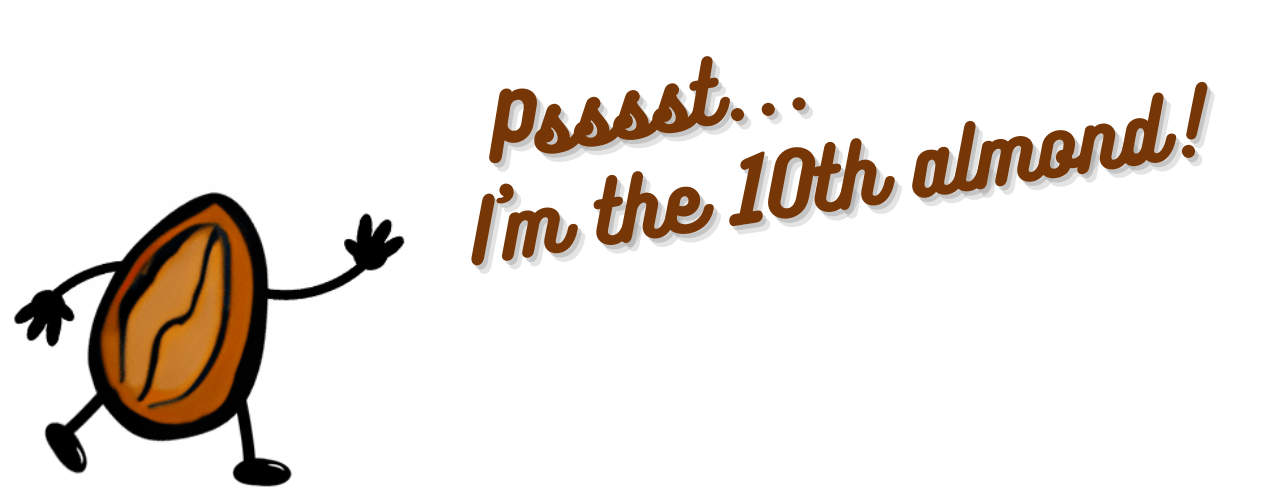Happy Sunday 👋
What is the most hydrating drink? It’s the [hydrating] drink that you drink the most of. In other words, the one you enjoy and will reach for often!
In today’s email we cover heart attack and stroke survival, shoulder mobility, and polyvagal exercises.
We know that 10almonds readers like evidence-based practical ways to live healthily, so when it comes to weight management, today’s sponsor Noom offers an evidence-based program that combines psychology with technology to provide expert personalized coaching, with a very good track record of strong results. Click here to take their 5-minute quiz and get a 14-day free trial!
Today’s Main Feature
Surviving A Heart Attack? Stroke? There’s An App For That
…and it was found to be 100% accurate in identifying patients who were later admitted to the hospital:
Recommended Reading
Kiss Of Death?
Is it dangerous to kiss someone who’s eaten gluten if you have coeliac disease?
“The Longevity Vitamin” (That’s Not A Vitamin)
The nutraceutical so powerful that arguments are being made by scientists to classify it as a vitamin, because not getting enough results sufficiently worse health outcomes:
Watch and Learn
Shoulder Mobility Hack (Measurable Results In 60 Seconds)
Mobility usually improves with time and consistency, but there’s a quick hack that can enhance shoulder mobility in about 60 seconds:
Prefer text? The above video will take you to a 10almonds page with a text overview, as well as the video!
Our Sponsors Make This Publication Possible
Ready for Change? Noom Helps You Lose Weight and Keep It Off!
Noom combines psychology, technology, and expert coaching to help you make healthier choices and reach your weight loss goals. With a personalized plan, tracking tools, and constant support, Noom helps you stay motivated and consistent long-term. Features that make Noom stand out:
Food logging with 1 million+ items
Thousands of healthy recipes
1,000+ interactive lessons on weight loss, mindful eating, and more
Personal health insights and progress tracking
Community support through Circles
Water, activity, and health app tracking
Connect your devices (Fitbit, Garmin, and more)
Maintenance Mode to keep your weight steady
Optional 1-on-1 coaching sessions with a health coach
See why Noom is trusted by millions and featured in The New York Times, Shape, Forbes Health, and more. Take this quick quiz to get started!
Please do visit our sponsors—they help keep 10almonds free
This Or That?
Vote on Which is Healthier
Yesterday we asked you to choose between guava and papaya—we picked the guava (click here to read about why), as did just 29% of you!
Now for today’s choice:
Click on whichever you think is better for you!
One-Minute Book Review
Accessing the Healing Power of the Vagus Nerve: Self-Help Exercises for Anxiety, Depression, Trauma, and Autism – by Dr. Stanley Rosenberg
There are a lot of books out there about using vagus nerve stimulation to improve various aspects of one’s mental and physical health, but often they boil down to “massage this and relax”.
In this case, the book makes heavy use of the ideas described in a book we’ve reviewed previously: The Polyvagal Theory – by Dr. Stephen Porges
That book is considered the book on this topic, so… Why read this one when that one is right there?
The main reason you might want to read this book rather than that one, is that that one’s a very dense and technical 386 pages, whereas this one’s at the heavy-end-of-pop-science, and 296 pages. This distinction makes it a lot easier for the layperson to read—the other, while published for the public, was very clearly written for academics.
A second reason you might want to read this book rather than that one is that this one is written with practical intent; while Dr. Porges’ book was focused on “how this works”, Dr. Rosenberg’s book is focused on “how to use this to achieve specific, practical ends”.
As to what those are: the list of things the author claims these techniques will cure is too long to go into each item here, but we will say that it doesn’t look to us like the evidence is here for all of these claims. In many cases the author relies on anecdotal case studies, and in equally many (often the same) cases, it might be fairer to say that the techniques support the body’s natural processes rather than that it, say, will treat a hernia or fix bipolar disorder. Maybe one day evidence will be found to demonstrate that these exercises can indeed do those things, but it’s not today.
Bottom line: in this reviewer’s opinion, the author makes some overly bold claims about the results one can expect, but that doesn’t take away from the fact that this is still an excellent practical guide to vagus nerve stimulation, and in many ways a much more accessible introduction to polyvagal theory than Dr. Porges’ magnum opus, while still being head and shoulders above most books about the vagus nerve.
Penny For Your Thoughts?
What did you think of today's newsletter?
Wishing you a peaceful Sunday,
The 10almonds Team








